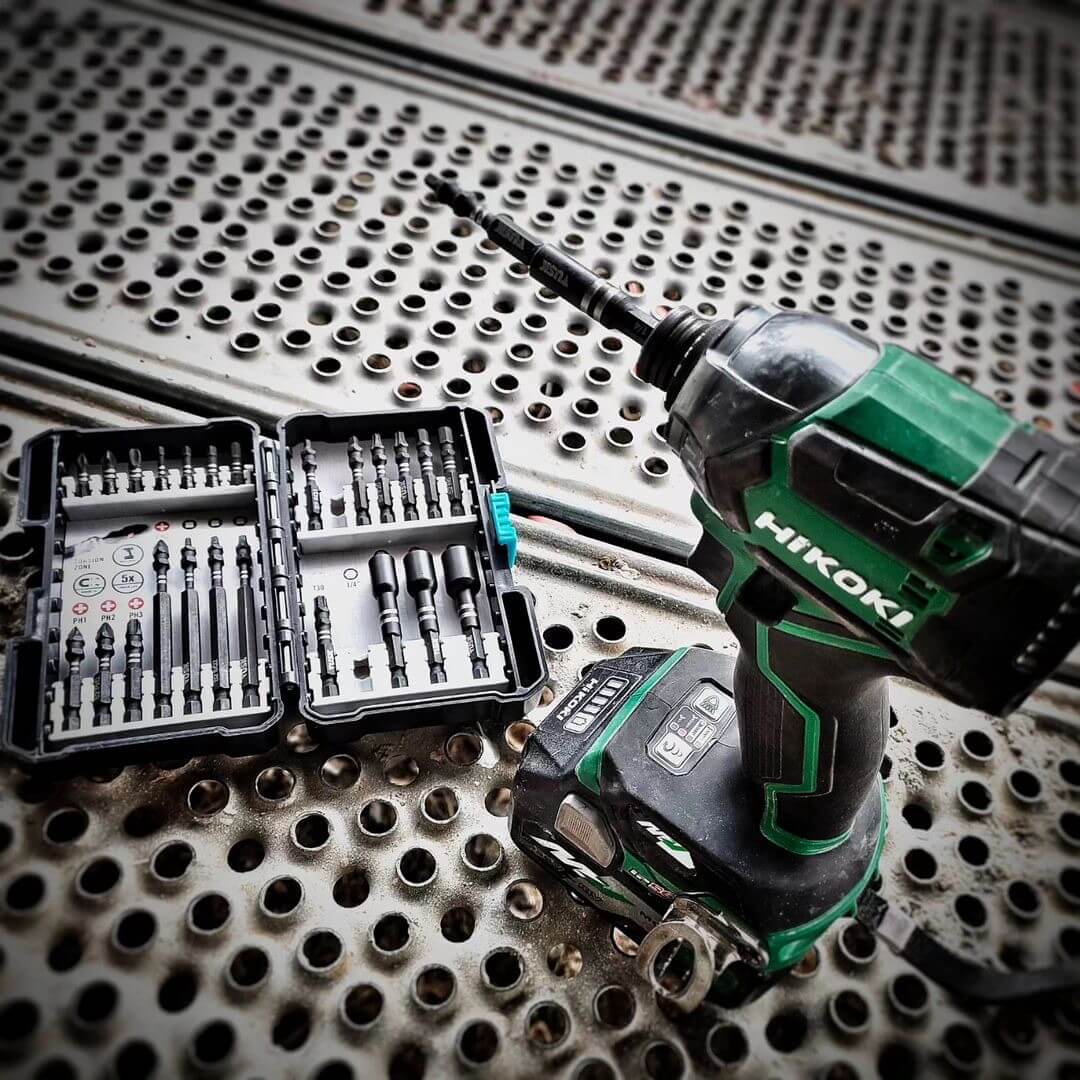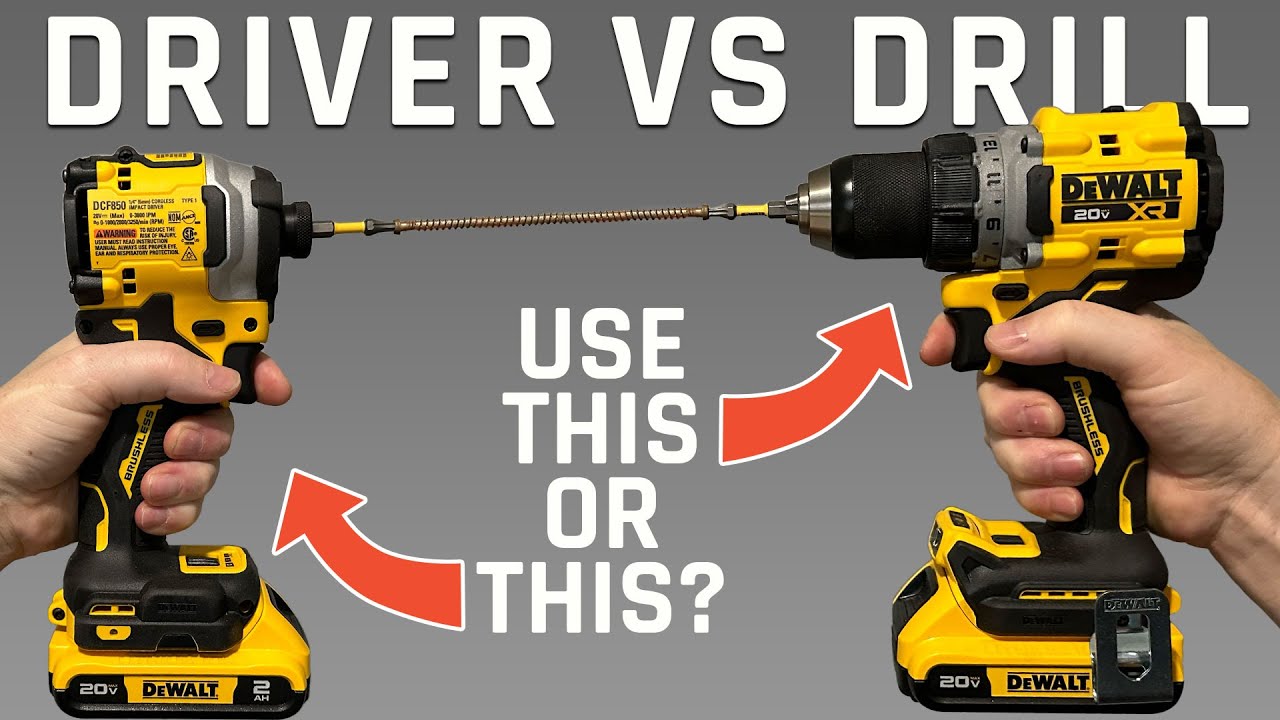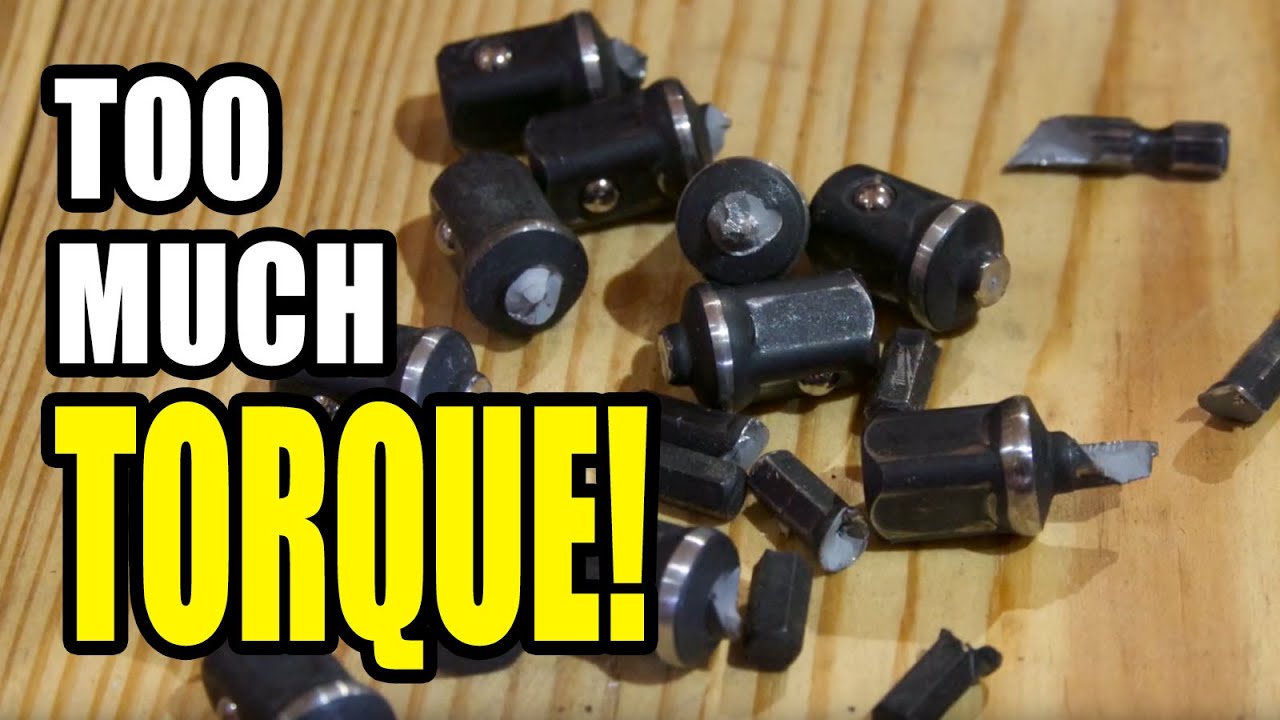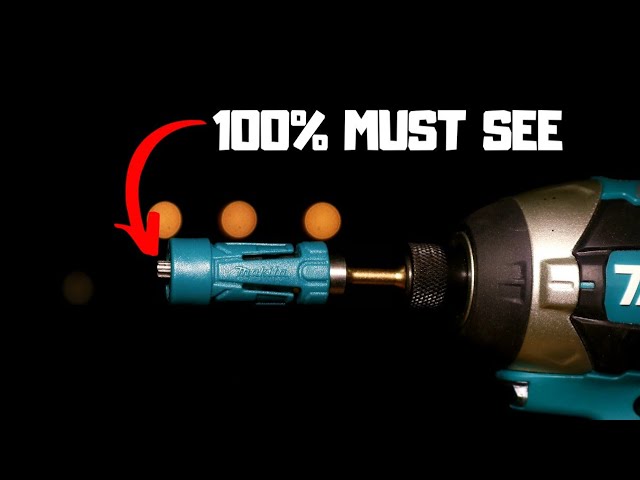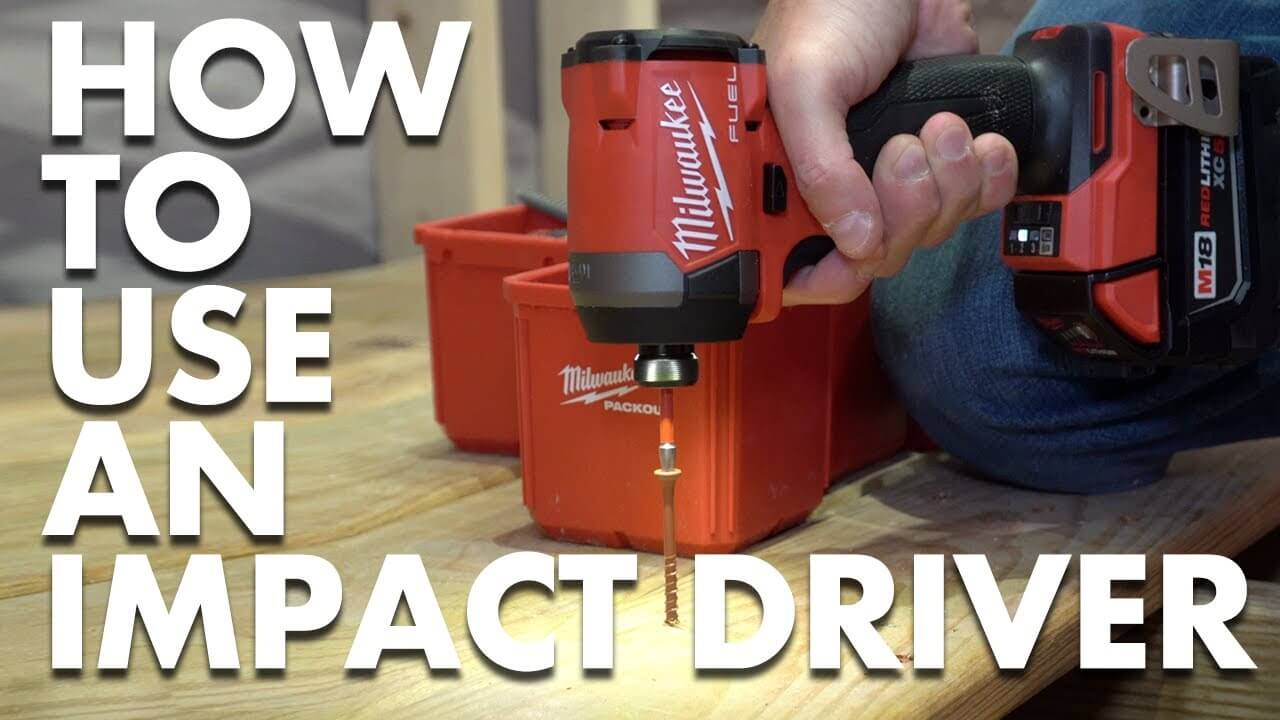How to Use an Impact Driver for Screws: Expert Tips
Ever since I embarked on my DIY journey, I’ve been fascinated by the myriad of tools that have transformed my woodworking projects. Among them, the impact driver stands out as a game-changer.
It’s not just another power tool; it’s a testament to how technology can make tasks simpler and more efficient. Whether you’re a seasoned carpenter or someone just starting out in the world of DIY, understanding the nuances of tools can elevate your work to professional standards.
In this post, I’ll delve deep into the world of impact drivers, sharing personal experiences and insights that I’ve gathered over the years. From distinguishing it from other tools to ensuring safety while using it, let’s unravel the art and science behind this incredible tool. Join me as we explore the ins and outs of using an impact driver for screws.
What is an Impact Driver Used For?
An impact driver, at its core, is a powerful tool designed to make your woodworking and construction tasks more efficient. Its primary function, and perhaps the most common application, is driving screws. The high torque and rapid rotational bursts of an impact driver make it an unparalleled tool for this purpose, ensuring screws are driven in smoothly and securely. But that’s just the tip of the iceberg.
- Impact drivers for driving screws: This is the primary use, allowing for quick and efficient fastening of screws into various materials, from softwoods to denser surfaces.
- Tightening and loosening bolts: With the right bit, impact drivers can be used to manage bolts, making tasks like assembling furniture or fixing appliances a breeze.
- Working with large fasteners: For heavy-duty applications, such as decking or framing, an impact driver’s torque proves invaluable.
- Drilling holes: While not its primary function, with the right bit, you can use an impact driver to drill holes, especially in softer materials.
- Handling specialty fasteners: Some projects require unique fasteners, and an impact driver can adapt to these needs with the appropriate bit.
As we delve deeper into the world of impact drivers, you’ll discover how this tool, especially when used for driving screws, can revolutionize your DIY projects and professional tasks alike.
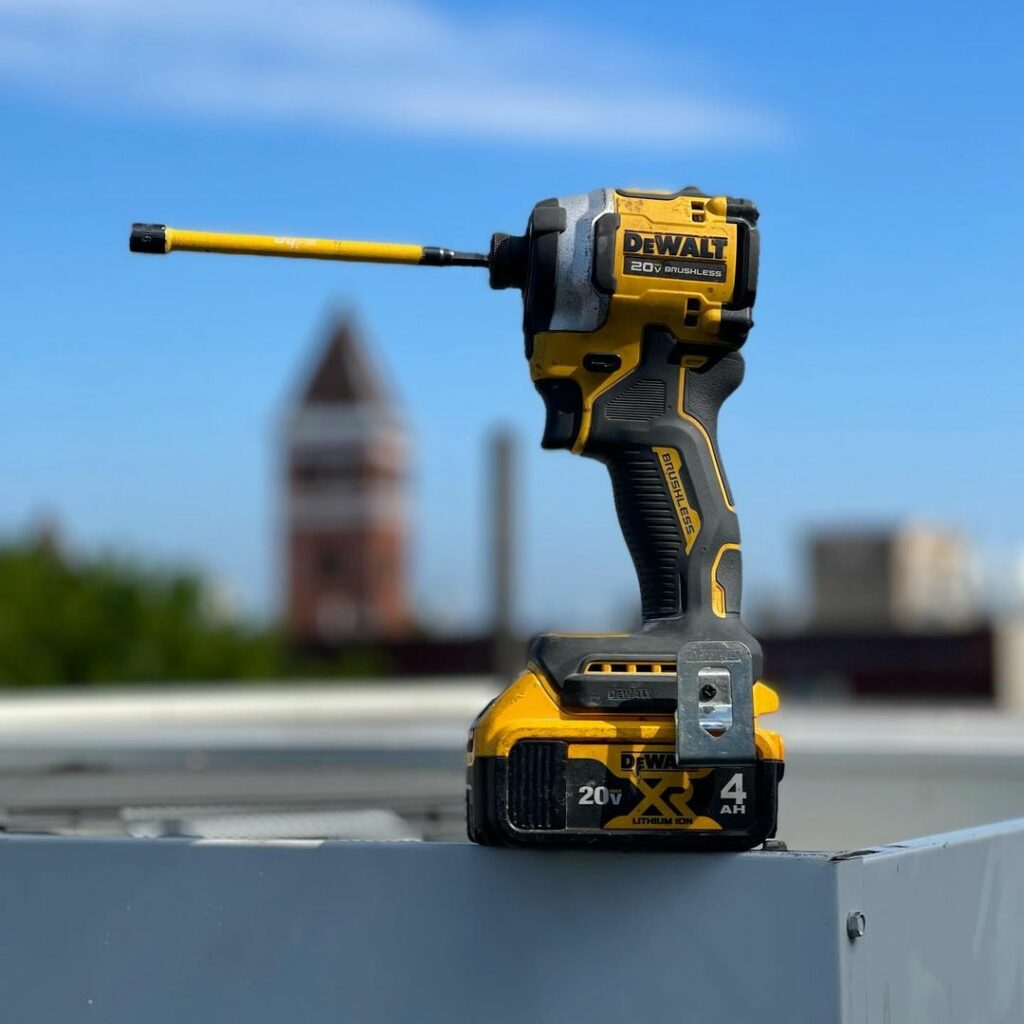
Understanding Impact Drivers
Identifying the Impact Driver
An impact driver is a power tool designed for driving screws, bolts, and other fasteners into various materials with high torque output. I find it to be an essential tool in my toolbox, whether I’m working on DIY projects or professional tasks.
The impact driver typically has a hexagonal chuck to hold the bits, and its compact design makes it easy for me to maneuver in tight spaces. When I use it, the rotational and concussive force allows me to drive screws and fasteners with less effort compared to a standard drill.
Difference between an Impact Driver and Hammer Drill
While both impact drivers and hammer drills deliver powerful blows when in use, they serve different purposes. As I mentioned earlier, my go-to tool for driving screws and fasteners is the impact driver due to its high torque and percussive force.
On the other hand, the hammer drill is more suitable for drilling into hard materials, such as concrete or masonry. The hammer drill provides both rotary and hammering action that helps me create clean and precise bore holes in tough materials.
I often find it helpful to remember the main differences between these two tools:
- Impact driver: Ideal for driving screws and fasteners, delivers high torque and concussive force.
- Benefits: Provides rapid and powerful screwing capabilities, making it efficient for tasks that require driving a large number of screws. Its design reduces wrist strain, and the concussive force ensures screws are driven in securely without stripping the screw head.
- Hammer drill: Perfect for drilling into hard materials, combines rotary and hammering action.
- Benefits: The dual-action mechanism allows for efficient drilling into tough materials like concrete or masonry. The hammering action breaks up the material while the rotary action removes it, resulting in clean and precise holes. Ideal for tasks that require anchoring or securing materials to hard surfaces.
By understanding the strengths of both impact drivers and hammer drills, I can make an informed decision on which tool to use for specific projects. This allows me to work more efficiently and effectively when tackling various tasks.
Basics of Using an Impact Driver
How to Handle an Impact Driver
Impact drivers are powerful tools that offer increased torque and efficiency compared to regular drills. Their unique design and mechanism make them ideal for various tasks, especially driving screws. However, to get the most out of an impact driver and ensure safety, it’s essential to handle it correctly.
Steps to Handle an Impact Driver:
- Grip Firmly: Always maintain a strong grip on the impact driver’s handle. This ensures stability and control during operation.
- Access the Variable Speed Trigger: Position your hand so that your index finger can easily access the variable speed trigger. This feature allows you to control the driver’s speed, adjusting it according to the task at hand.
- Changing the Bit:
- Ensure the driver is off.
- Pull the chuck collar forward.
- Insert the desired bit.
- Release the collar to lock the bit in place. This ensures the bit is securely seated and won’t dislodge during use.
Key Takeaway
Using an impact driver efficiently requires understanding its features and handling it with care. By following the steps above, you can ensure optimal performance and safety when working on your projects. Remember, the right technique combined with the right tool can make all the difference in achieving professional results.
Understanding the Power and Torque of Impact Drivers
When it comes to driving screws, the power and torque of an impact driver set it apart from regular drills. This unique combination ensures screws are driven efficiently, even in the toughest materials. Here’s a closer look at what makes impact drivers stand out:
- Torque:
- Defined as the turning or twisting force applied to a screw.
- Essential for efficient screw driving, especially in dense or hard materials.
- Not all impact drivers offer the same torque, so choosing a model with higher torque ensures optimal performance.
- Variable Speed:
- Allows for flexibility in controlling the driver’s speed via its trigger.
- Softer materials typically require slower speeds, while harder materials or longer screws benefit from faster speeds.
- Impact Driver vs. Impact Wrench:
- Both tools use rotational force, but they serve different purposes.
- Impact wrenches are for heavier-duty tasks like automotive repair.
- Impact drivers excel in light to medium-duty tasks, especially in woodworking and construction.
Power and Torque Metrics of Top Impact Drivers
| Impact Driver | Power | Torque |
|---|---|---|
| DeWalt DCF887 | 3,250 RPM | 1,825 in-lbs |
| Milwaukee 2857-20 | 3,600 RPM | 2,000 in-lbs |
| Makita XDT16 | 3,600 RPM | 1,600 in-lbs |
| Bosch IDH182 | 2,800 RPM | 1,650 in-lbs |
| Hilti SID 4-A22 | 2,500 RPM | 1,062 in-lbs |
When selecting an impact driver, understanding its power and torque capabilities is crucial. This knowledge ensures you pick the right tool for your project, guaranteeing efficiency and precision in every task.
Suitable Materials for Impact Driver Use
Driving Screws into Wood
When using an impact driver on wood, I find it to be an excellent tool for driving screws quickly and efficiently. The high torque produced by the impact driver allows me to drive large screws in with greater ease, and the quick bursts of rotational force help me to maintain control over the process.
Wood, being a relatively soft material, is ideal for using an impact driver, as it allows the screws to be securely fastened without causing damage to the material. When working with softer woods like pine or cedar, I make sure to choose the appropriate screw to avoid splitting the wood.
Working with Concrete and Brick
Impact drivers can handle harder materials like concrete, brick, and masonry. Though less common for these surfaces, they’re effective for driving screws into pre-drilled holes. It’s vital to use masonry-specific screws and ensure they’re the right size for the job.
Additionally, I should ensure that the screw has the proper length and diameter for the material it’s being used in. When working on more challenging materials like stone or steel, I have found that using an impact driver may not always be the best option. For these scenarios, a more specialized tool like a hammer drill could be a better choice.
Table: Power and Torque Metrics of Top Impact Drivers
| Material | Ideal Bits | Additional Tips |
|---|---|---|
| Wood | Phillips, Torx, Square drive, Spade, Auger | Use higher torque settings for dense hardwoods. |
| Metal | Hex shank drill bits, Self-tapping screw bits | Use lower speeds to avoid stripping screws. |
| Masonry | Masonry drill bits with hex shank | For extensive masonry, consider using a hammer drill. |
Choosing the right screw for the material—be it for drilling concrete, brick, wood or masonry—is crucial. With the correct tools and materials, an impact driver streamlines my work, making tasks more efficient and straightforward.
Types of Screws and Fasteners for Impact Drivers
Using Impact Drivers for Bolts
I often use impact drivers for tightening and loosening bolts because of their superior torque and high impact force. Bolts, typically combined with nuts, create a strong connection between two objects or materials.
To use an impact driver for bolts, I make sure to choose the correct size socket and driver bit that matches the bolt head. Impact-rated socket and driver bits are essential to get the best results and to avoid any damage to the fastener or the tool.
When tightening a bolt, I always apply consistent pressure to the impact driver and let the tool do the work. The impact driver’s bursts of power will help drive the bolt efficiently. For removing bolts, I just switch the driver to reverse mode and carefully apply pressure to loosen the fastener.
Impact Drivers for Large Fasteners
Large fasteners, such as lag screws and large diameter wood screws, are commonly used for heavy-duty applications, like decking and framing. When I need to work with large fasteners, I rely on my impact driver to provide the necessary power and control.
Before driving a large fastener, I make sure to select the appropriate driver bit, such as Phillips, square, or star, depending on the fastener head. Just like when working with bolts, using impact-rated bits is crucial to avoid damaging the fastener or the tool. I also make sure the workpiece is secured, as this prevents any unnecessary movement while driving the fastener.
When driving large fasteners, it’s important to apply steady pressure to the impact driver, letting the tool’s torque and bursts of power do the work on long fasteners. This ensures the fastener is properly set and prevents any stripping or damage to the fastener.
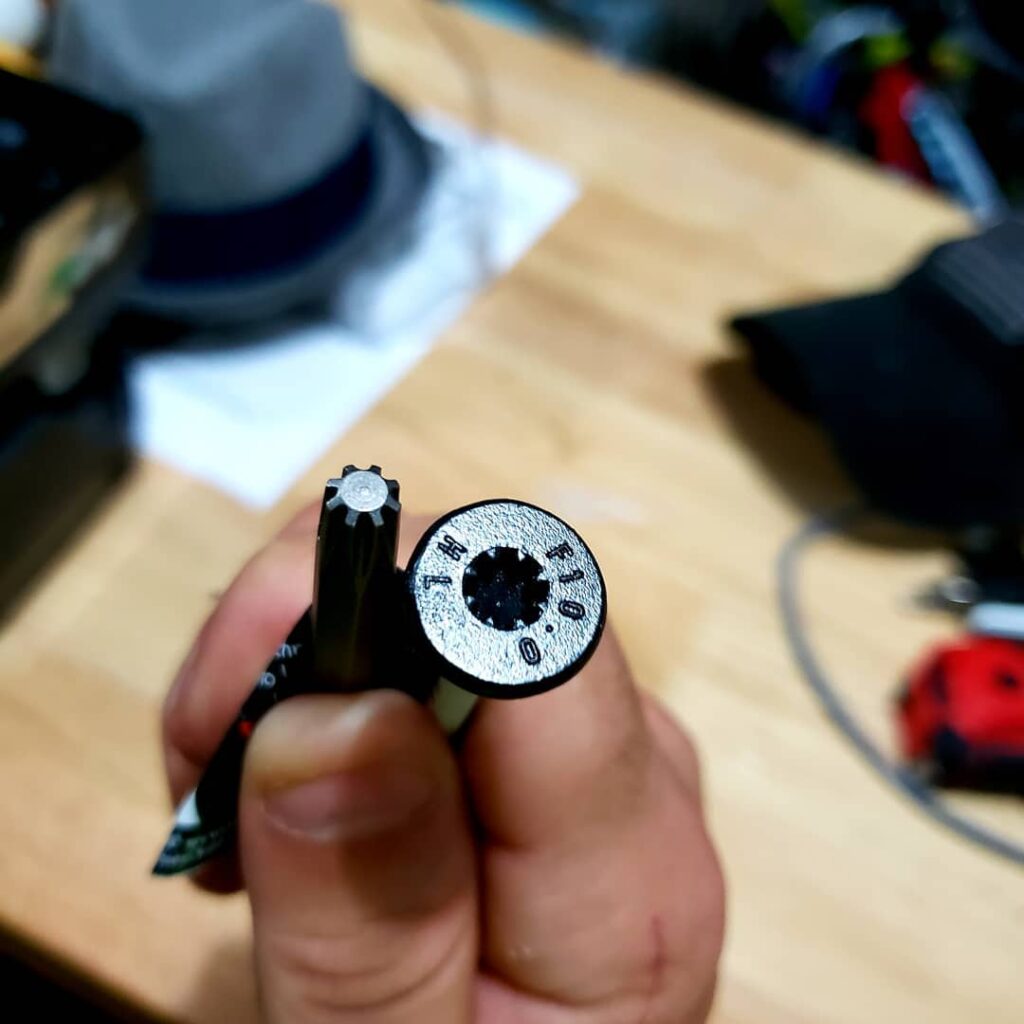
Impact Driver Bits and Accessories
Types of Drill Bits
There are various types of drill bits available in the market. Some of the common types include:
- Flathead or slotted bits: Suitable for slotted screw heads.
- Benefits: Simple design makes them easy to use and they fit a wide range of common screws, making them versatile for various applications.
- Phillips head bits: Designed for screws with a cross or “+” shape.
- Benefits: Widely adopted and recognized, they offer a good grip and reduce the chance of the bit slipping out, making them ideal for general-purpose tasks.
- Pozidriv bits: Similar to Phillips head bits, but with improved torque and less cam-out.
- Benefits: Enhanced design provides better engagement with the screw, reducing wear on the screw head and the bit. This results in longer bit life and less damage to screws.
- Torx head bits: Work with screws that have a six-pointed star shape.
- Benefits: The unique design offers high torque transfer, reducing the chance of stripping the screw head. This makes them especially useful for applications requiring tighter fastenings.
Using the right bit for the intended screw type is crucial to ensure a proper connection and avoid damaging the screw head. Most impact drivers come with a wide range of bits to help with various tasks.
Choosing the Correct Bit for Your Project
When selecting the appropriate drill bit for my project, I consider the type of screw I am working with and the material I need to drill into. Here are some guidelines to help choose the right bit for a specific task:
- Material: The bit material should be able to handle the required task without breaking or wearing out too quickly. High-speed steel bits are suitable for drilling into wood and plastics, while carbide and cobalt bits are more appropriate for heavy-duty tasks, such as drilling into metal or masonry.
- Bit Size: The bit size should correspond to the size of the screw or hole needed. Using a bit that is too large or too small can result in damage to the screw, the material, or the tool.
- Bit Type: As mentioned earlier, the type of bit should match the screw head type. For example, if my project involves using Phillips head screws, I should use a Phillips head bit.
Following these guidelines ensures that I use the right tool or bit for my project and get the job done effectively and efficiently, while reducing the risk of damaging my tools or materials.
Safety Measures When Using Impact Drivers
When I use an impact driver for screws and fasteners, I always prioritize safety first. Here are some paramount safety precautions you’ll need to consider before pulling the trigger on this powerful little beast.
- Hearing Protection:
- Impact drivers can be notably loud, and it’s essential to protect your ears.
- Prolonged exposure to the noise can cause hearing damage.
- I always use earmuffs or earplugs to safeguard against potential hearing loss.
- Maintaining a Safe Workspace:
- A clean and well-lit work area is crucial for safety.
- Keeping the workspace clutter-free prevents accidents, like tripping over cords or stepping on sharp items.
- Proper lighting ensures clear visibility of the project and surroundings.
- Regular Tool Inspection:
- Before any project, I thoroughly inspect my impact driver.
- It’s vital to check for signs of damage or wear to ensure the tool’s optimal performance.
- Key areas to examine include the chuck, bits, and all moving parts.
By following these safety measures, you can ensure a safer and more efficient working experience with your impact driver.
Popular Impact Driver Brands
DeWalt Impact Drivers
As a DIY enthusiast, I’ve used quite a few impact drivers, and I can confidently say that DeWalt produces some of the best on the market. DeWalt is a respected name in the power tool industry, and their impact drivers continue to maintain high standards. These drivers are not just reliable but well-built, providing both power and precision when driving screws.
DeWalt impact drivers typically offer high torque output and efficient brushless motors, making them suitable for a wide range of tasks. I’ve personally found the power and speed settings on DeWalt drivers to be incredibly helpful, enabling me to tackle various tasks with ease.
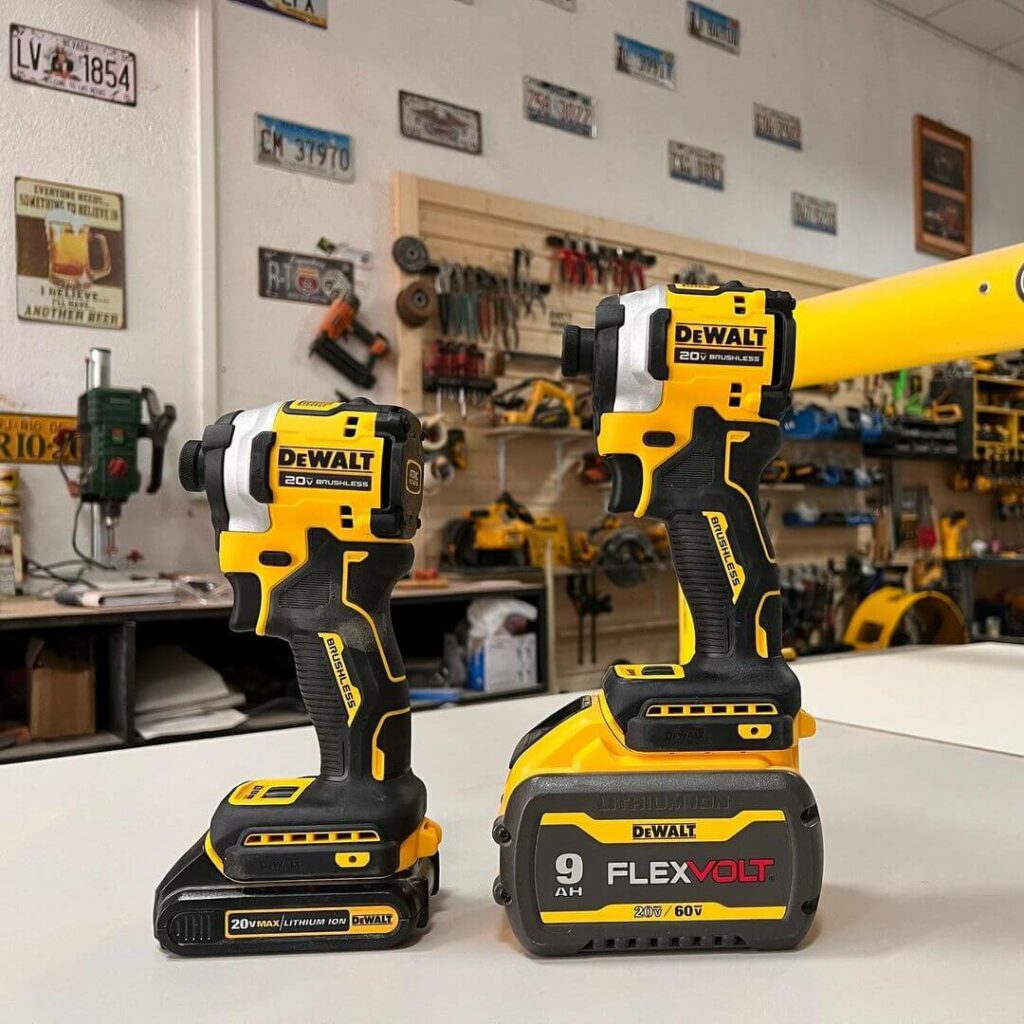
Makita Impact Drivers
Another brand that has a positive impact on my DIY projects is Makita. They are also a renowned name in the power tool industry, producing high-quality impact drivers that deliver excellent performance. Makita impact drivers are known for their compact design and outstanding ergonomics, making them comfortable to use during long projects.
One of the things I like most about Makita impact drivers is their vast lineup, allowing me to choose the perfect driver tailored to my needs. For instance, the Makita GDT02Z provides excellent speed selection, while the sub-compact Makita XDT18ZB offers a lightweight solution for light-duty tasks.
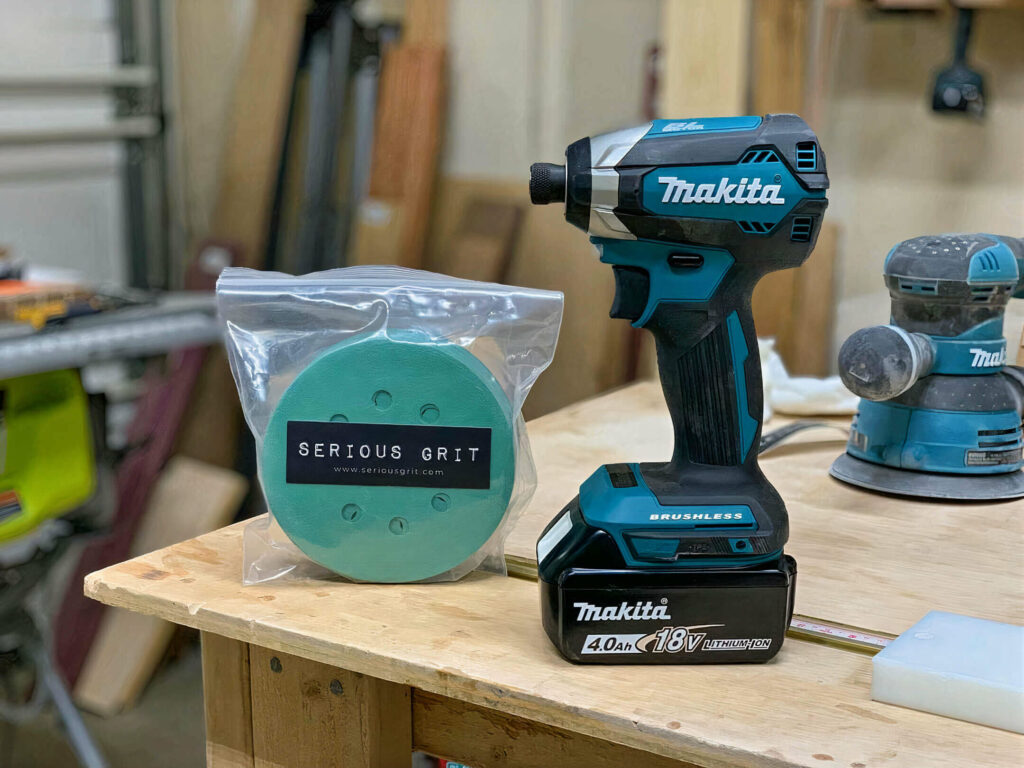
Impact Driver Versatility
Using Impact Drivers for DIY Projects
As a DIY enthusiast, I’ve found that using an impact driver can significantly improve efficiency and precision in home improvement projects. Whether I’m working on a garage renovation or building a deck, an impact driver provides powerful rotational force that makes driving screws and bolts much easier.
This high torque feature has been especially helpful in preventing the bits from slipping out of the grooves of the screw head, resulting in fewer stripped screws and a cleaner finish when working on projects like hanging shelves or assembling furniture.
Impact drivers also often come with variable speed settings, allowing me to control the power based on the specific task at hand. This adaptability makes them suitable for a range of DIY projects, from simple home repairs to more complex construction endeavors.
Professional Use of Impact Drivers
In a professional setting, impact drivers play an essential role in speeding up workflows, enhancing productivity, and reducing physical strain. As a construction worker or home repair specialist, using an impact driver saves time when driving long screws or working with large, heavy materials. This time-saving aspect directly translates to quicker project completion and more efficient job sites.
Moreover, the concussive force exerted by an impact driver prevents me from putting too much pressure on my wrists and arms, reducing the risk of fatigue or injury. With its compact size and maneuverability, an impact driver becomes an indispensable tool for any professional working in home improvement or industrial construction settings.
As someone who has seen the benefits of an impact driver in both DIY projects and professional applications, I can confidently say that it’s a versatile and essential addition to anyone’s toolbox.
In Conclusion
As we wrap up our deep dive into the world of impact drivers, it’s evident how indispensable this tool has become for both DIY enthusiasts and professionals.
From driving screws with precision to handling a variety of fasteners, the versatility of an impact driver is unmatched. If you’re on the hunt for the best impact driver, remember to consider its torque capabilities, the range of bits available, and its adaptability to different tasks. In essence, an impact driver is not just a tool; it’s an investment in efficiency, quality, and craftsmanship.
Whether you’re assembling a piece of furniture, working on a construction site, or just fixing things around the house, having the right tools can make all the difference. And in the realm of power tools, the impact driver undoubtedly stands tall as a game-changer.

